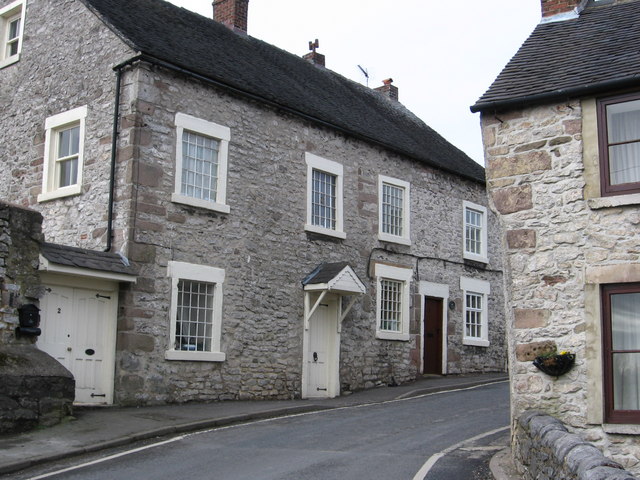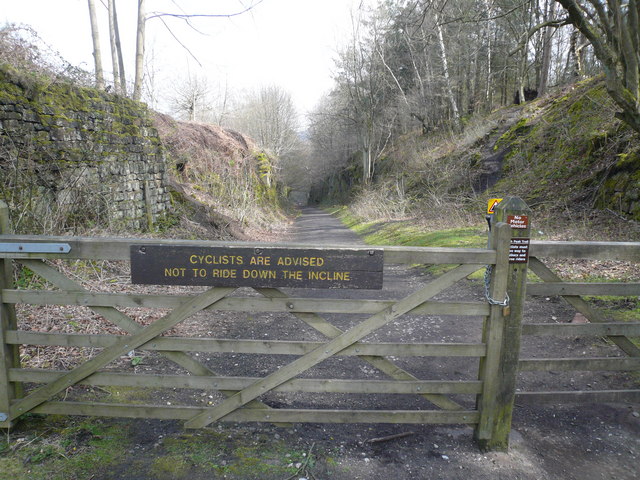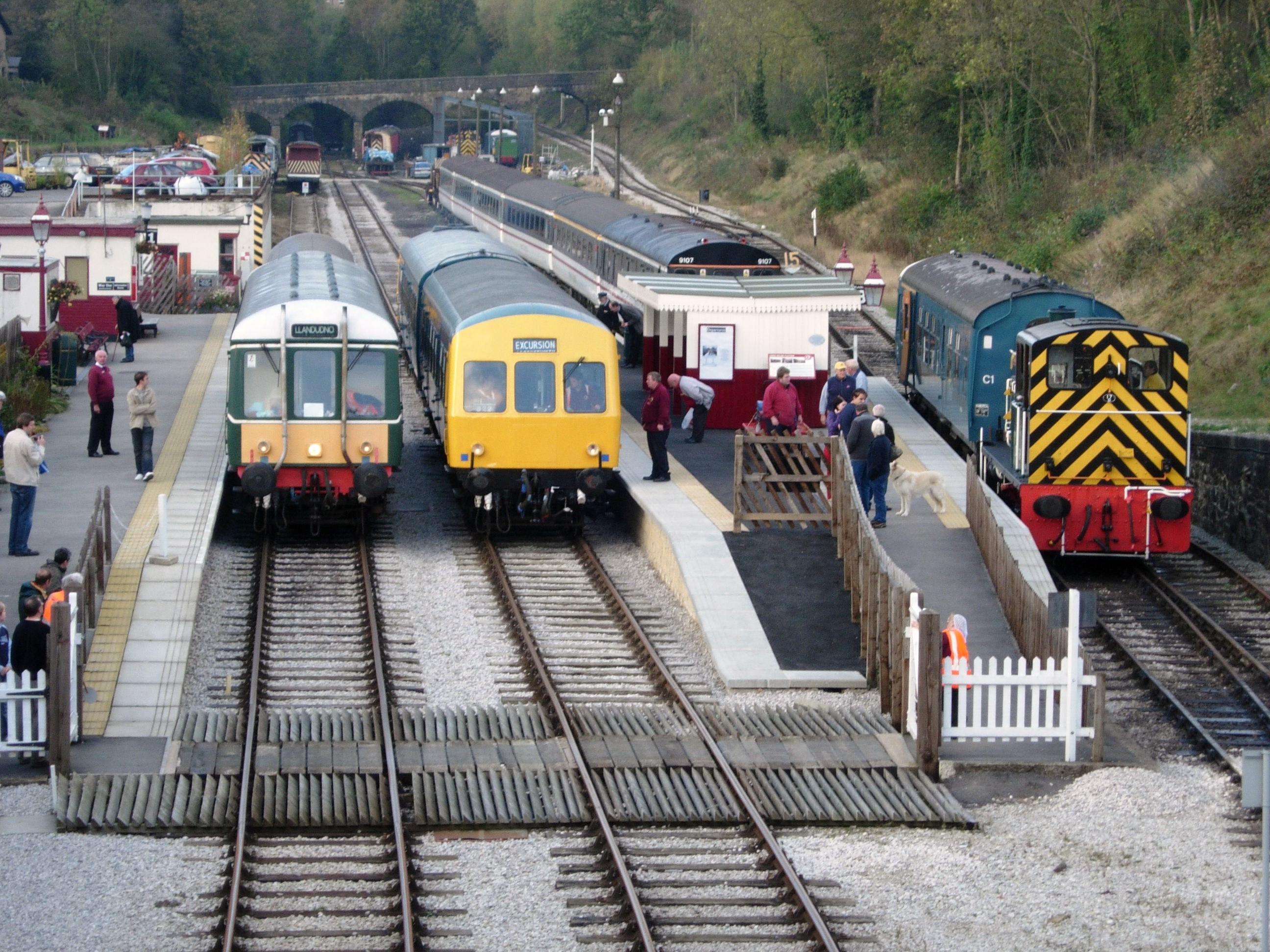|
Middleton-by-Wirksworth
Middleton or Middleton-by-Wirksworth is an upland village and civil parish lying approximately one mile NNW of Wirksworth, Derbyshire, England. Middleton was, in 1086, a berewick (a supporting farm) of the town and manor of Wirksworth. Middleton was formerly known for its lead mines and high quality limestone quarries, including the underground quarry site at Middleton Mine. The Middleton Mine networks underground for approximately with tunnels on three different levels running under Middleton Moor to the Hopton Wood quarry works at the other side of the hill below Ryder Point Works’. Part of the tunnel collapsed in the 1980s leaving a noticeable depression in the ground above on the eastern side of Middleton Moor. The population of the parish as taken at the 2011 Census was 775. The attraction towards Middleton becoming a village had much to do with the fact that it is one of the few Derbyshire villages in the limestone area that has a ‘perched’ water table due to the im ... [...More Info...] [...Related Items...] OR: [Wikipedia] [Google] [Baidu] |
Listed Buildings In Middleton-by-Wirksworth
Middleton-by-Wirksworth is a civil parish in the Derbyshire Dales district of Derbyshire, England. The parish contains six listed buildings that are recorded in the National Heritage List for England The National Heritage List for England (NHLE) is England's official database of protected heritage assets. It includes details of all English listed buildings, scheduled monuments, register of historic parks and gardens, protected shipwrecks, an .... All the listed buildings are designated at Grade II, the lowest of the three grades, which is applied to "buildings of national importance and special interest". The parish contains the village of Middleton-by-Wirksworth and the surrounding area, and the listed buildings consist of houses, cottages and associated structures, a milestone and a church. __NOTOC__ Buildings References Citations Sources * * * * * * * * {{DEFAULTSORT:Middleton-by-Wirksworth Lists of listed buildings in Derbyshire ... [...More Info...] [...Related Items...] OR: [Wikipedia] [Google] [Baidu] |
Wirksworth
Wirksworth is a market town in the Derbyshire Dales district of Derbyshire, England. Its population of 5,038 in the 2011 census was estimated at 5,180 in 2019. Wirksworth contains the source of the River Ecclesbourne. The town was granted a market charter by Edward I in 1306 and still holds a market on Tuesdays in the Memorial Gardens. The parish church of St Mary's is thought to date from 653. The town developed as a centre for lead mining and stone quarrying. Many lead mines were owned by the Gell family of nearby Hopton Hall. History The origins of Wirksworth are thought to have related to the presence of thermal warm water springs nearby, coupled with a sheltered site at the head of a glaciated valley, able to yield cereals such as oats and provide timber suitable for building. The Wirksworth area in the White Peak is known for Neolithic and Bronze Age remains. Woolly rhino bones were found by lead miners in 1822 in Dream Cave, on private land between Wirksworth and present ... [...More Info...] [...Related Items...] OR: [Wikipedia] [Google] [Baidu] |
Middleton Incline
Middleton Incline is a former railway incline in Middleton, Derbyshire. Historically on the Cromford and High Peak Railway. The incline was one of six inclines along the entire line from Cromford to Whaley Bridge in High Peak, Derbyshire. The incline was opened in 1830 and was in use until 1967 when the entire line from Whaley Bridge to Middleton was closed. With the section to Cromford closing in 1963. Today, the incline is used as part of the High Peak Trail The High Peak Trail is a trail for walkers, cyclists and horse riders in the Peak District of England. Running from Dowlow , near Buxton, to High Peak Junction, Cromford , it follows the trackbed of the former Cromford and High Peak Rai .... Middleton Pasture Incline was also 1 in 9 gradient. Like the other ones along the former railway. References Railway inclines in the United Kingdom {{UK-rail-transport-stub ... [...More Info...] [...Related Items...] OR: [Wikipedia] [Google] [Baidu] |
Hopton Wood Stone
Hopton Wood stone (sometimes Hopton-Wood stone or Hoptonwood stone) is a type of limestone quarried west of Middleton-by-Wirksworth, Derbyshire, England. Described as "very fine, almost like marble" and as "England’s premier decorative stone", it is particularly suited to carving, making it popular for tombstones (including many thousands for the Commonwealth War Graves Commission), sculpture and building. Buildings and structures made using Hopton Wood stone include the Houses of Parliament, Westminster Abbey, the Albert Memorial, Lichfield Cathedral, Calke Abbey, Chatsworth House and Oscar Wilde's tomb Oscar Wilde's tomb is located in Père Lachaise Cemetery, Paris, France. It took nine to ten months to complete by the sculptor Jacob Epstein, with an accompanying plinth by Charles Holden and an inscription carved by Joseph Cribb. Commission .... In 1947 the Hopton-Wood Stone Firms Ltd commissioned a book about Hopton Wood stone, published by Fanfare press. Refere ... [...More Info...] [...Related Items...] OR: [Wikipedia] [Google] [Baidu] |
Derbyshire Dales
Derbyshire Dales ( ) is a local government district in Derbyshire, England. The population at the 2011 Census was 71,116. Much of it is in the Peak District, although most of its population lies along the River Derwent. The borough borders the districts of High Peak, Amber Valley, North East Derbyshire and South Derbyshire in Derbyshire, Staffordshire Moorlands and East Staffordshire in Staffordshire and Sheffield in South Yorkshire. The district also lies within the Sheffield City Region, and the district council is a non-constituent partner member of the Sheffield City Region Combined Authority. A significant amount of the working population is employed in Sheffield and Chesterfield. The district offices are at Matlock Town Hall in Matlock. It was formed on 1 April 1974, originally under the name of West Derbyshire. The district adopted its current name on 1 January 1987. The district was a merger of Ashbourne, Bakewell, Matlock and Wirksworth urban districts alon ... [...More Info...] [...Related Items...] OR: [Wikipedia] [Google] [Baidu] |
Middleton Top Engine House
Middleton may refer to: People *Middleton (name), list of notable people with surname of Middleton Places Australia *Middleton, Queensland *Middleton, South Australia *Middleton, Tasmania, on the D'Entrecasteaux Channel *Middleton Beach, Western Australia *Middleton Reef, Tasman Sea Canada *Middleton, Nova Scotia * Middleton, Ontario Ireland *Midleton, County Cork New Zealand * Middleton, New Zealand, a suburb of Christchurch * Lake Middleton, a small lake in the South Island of New Zealand South Africa * Middleton, Eastern Cape, a hamlet United Kingdom England ;''Buckinghamshire'' *Middleton, Milton Keynes ;''County Durham'' * Middleton, Hartlepool *Middleton One Row *Middleton St George *Middleton-in-Teesdale ;''Cumbria'' *Middleton, Cumbria ;''Derbyshire'' *Middleton-by-Wirksworth **Middleton Incline, a former railway incline **Middleton railway station (Derbyshire) *Middleton-by-Youlgreave ;''Dorset'' *Middleton, Dorset ;''Essex'' *Middleton, Essex ;''Hampshire'' ... [...More Info...] [...Related Items...] OR: [Wikipedia] [Google] [Baidu] |
High Peak Trail
The High Peak Trail is a trail for walkers, cyclists and horse riders in the Peak District of England. Running from Dowlow , near Buxton, to High Peak Junction, Cromford , it follows the trackbed of the former Cromford and High Peak Railway, which was completed in 1831 to carry minerals and goods between the Cromford Canal wharf at High Peak Junction and the Peak Forest Canal at Whaley Bridge. Closure of the line occurred during the Beeching era, with the first section of the line closing in 1963 (i.e. the Middleton Incline) followed by full closure in 1967. In 1971 the Peak Park Planning Board and Derbyshire County Council bought the largest part of the trackbed and, in partnership with the Countryside Commission, adapted it for its current leisure use. The trail has a crushed limestone surface which makes it ideal for all users, including wheelchair use, assisted by level access onto the trail at various points along its route. The High Peak Trail is now a national ... [...More Info...] [...Related Items...] OR: [Wikipedia] [Google] [Baidu] |
Towns And Villages Of The Peak District
A town is a human settlement. Towns are generally larger than villages and smaller than cities, though the criteria to distinguish between them vary considerably in different parts of the world. Origin and use The word "town" shares an origin with the German word , the Dutch word , and the Old Norse . The original Proto-Germanic word, *''tūnan'', is thought to be an early borrowing from Proto-Celtic *''dūnom'' (cf. Old Irish , Welsh ). The original sense of the word in both Germanic and Celtic was that of a fortress or an enclosure. Cognates of ''town'' in many modern Germanic languages designate a fence or a hedge. In English and Dutch, the meaning of the word took on the sense of the space which these fences enclosed, and through which a track must run. In England, a town was a small community that could not afford or was not allowed to build walls or other larger fortifications, and built a palisade or stockade instead. In the Netherlands, this space was a garden, m ... [...More Info...] [...Related Items...] OR: [Wikipedia] [Google] [Baidu] |
Villages In Derbyshire
A village is a clustered human settlement or community, larger than a hamlet but smaller than a town (although the word is often used to describe both hamlets and smaller towns), with a population typically ranging from a few hundred to a few thousand. Though villages are often located in rural areas, the term urban village is also applied to certain urban neighborhoods. Villages are normally permanent, with fixed dwellings; however, transient villages can occur. Further, the dwellings of a village are fairly close to one another, not scattered broadly over the landscape, as a dispersed settlement. In the past, villages were a usual form of community for societies that practice subsistence agriculture, and also for some non-agricultural societies. In Great Britain, a hamlet earned the right to be called a village when it built a church. [...More Info...] [...Related Items...] OR: [Wikipedia] [Google] [Baidu] |
Via Gellia
The A5012 road is a main road in the south of the English county of Derbyshire. Route Around in length, it connects two primary north–south routes; the A6 at Cromford and the A515 between Buxton and Ashbourne. It passes through Pikehall and Grangemill and alongside Ible. Via Gellia The eastern part (Grangemill to Cromford, set in a deep valley) is known as the Via Gellia – a steep-sided wooded dry valley and road. It is probably named after (or by) Philip Eyre Gell in a mock-Latin style; he was responsible for building the road through the valley, the name being a link to the Gell family's claim of Roman descent. They held lead-mining interests in and around Wirksworth. At its lower (eastern) end is the village of Cromford and its Georgian mill, built by inventor and entrepreneur Richard Arkwright. At the western end is the hamlet of Grangemill. The road appears to have been constructed about 1790 to connect the Gells' extensive lead-mining interests around ... [...More Info...] [...Related Items...] OR: [Wikipedia] [Google] [Baidu] |
B5023 Road
B roads are numbered routes in Great Britain of lesser importance than A roads. See the article Great Britain road numbering scheme The Great Britain road numbering scheme is a numbering scheme used to classify and identify all roads in Great Britain. Each road is given a single letter (which represents the road's category) and a subsequent number (between 1 and 4 digits). ... for the rationale behind the numbers allocated. Zone 5 (3 digits) Zone 5 (4 digits) References {{DEFAULTSORT:B Roads In Zone 5 Of The Great Britain Numbering Scheme 5 5 ... [...More Info...] [...Related Items...] OR: [Wikipedia] [Google] [Baidu] |
Ecclesbourne Valley Railway
The Ecclesbourne Valley Railway is a long heritage railway in Derbyshire. The headquarters of the railway centre on Wirksworth station, and services operate in both directions between Wirksworth and Duffield and from Wirksworth to Ravenstor. Passengers are able to board and alight heritage services at Duffield where a station platform (3) has been re-constructed. Heritage services are timed to connect with East Midlands Railway Nottingham – Derby – Matlock service at the adjacent Duffield Network Rail platforms and therefore it is now possible for passengers to travel to and from Wirksworth by train from anywhere on the national network. The Ecclesbourne Valley Railway is named after the River Ecclesbourne and the track follows the river from its source to its confluence with the River Derwent at the Derbyshire village of Duffield. Despite being a branch in itself, there is also a separate branch operating from Platform 3 at Wirksworth Station up a 1 in 27 ( ... [...More Info...] [...Related Items...] OR: [Wikipedia] [Google] [Baidu] |




.jpg)


